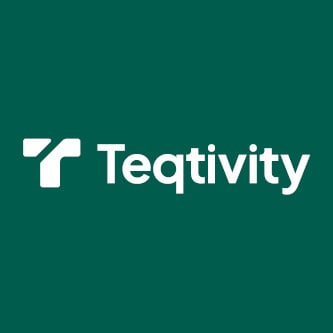The popularity of earned wage access, a service that typically allows employees to draw advances on a portion of their earned wages prior to payday, has soared over the past decade as employees looked for ways to manage liquidity between paydays. The biweekly pay cycle — used by 43% of employers in 2023, according to the Bureau of Labor Statistics — is outmoded, EWA advocates say.
Fintech companies began offering EWA in the mid-2010s, with adoption accelerating in the COVID-19 pandemic, according to research from Marshall Lux and Cherie Chung at Harvard University’s Kennedy School of Government. It has been popular in high-turnover industries like retail and food service where unbanked or underbanked workers are often taking the advances via an app through their employers to meet expenses or navigate emergencies, the report states. By 2022 four in five employers offered EWA, according to the Roseland, New Jersey-based global online payment provider ADP. Some EWA providers offer it directly to consumers independently of their employers.
Proponents of EWA tout benefits like improved employee retention, the cost-neutral nature of many EWA programs and improved financial health for workers.They argue that EWA is a safer alternative to payday loans because fees are typically lower than payday loans; and users don’t face aggressive collection practices.
More recently, the practice has drawn headlines as regulators and proponents have been drawn into battle over EWA’s merits and risks. In July, the Consumer Financial Protection Bureau drew criticism from the industry when it issued a proposed rule that would subject the sector to U.S. lending laws, considering EWA payments consumer loans, with any fees labeled finance charges.
In an agency study of 2021-2022 data from eight companies that partner with employers to offer EWA, it found workers with access to EWA use such services 27 times per year, on average, paying interest at an annual percentage rate of more than 100%, Payments Dive reported.
With workers increasingly demanding EWA as an option, its rollout raises some questions for CFOs. Experts say CFOs should be mindful of EWA’s regulatory uncertainty; the importance of safeguarding employee data when working with third-party EWA providers; and EWA’s longer-term impact on employees’ finances. Here are some key issues that finance teams who are considering offering EWA need to consider:
1. How is EWA typically structured?
EWA comes in two basic forms, employer–provided EWA, which typically entails the integration of payroll and timekeeping systems with third-party EWA platforms; and direct-to-consumer EWA, where companies that aren’t the employer use a series of data points, including cash flow, to determine the proportion of funds employees can access prior to payday.
When it comes to the employer-offered EWA programs, users typically can receive funds through ACH transfers that take between one to three days to reach the recipient’s bank account. Instant transfers are usually subject to a fee, ranging from $1.99 to $5.00 per transaction, according to a July report from the Consumer Financial Protection Bureau. Most employers do not cover this fee, according to the CFPB.
2. What are the advantages to EWA for companies looking to roll it out?
Ken Brause, CFO of DailyPay, an earned wage access provider, views the product as a win-win for companies and workers alike: he asserts employees have come to expect EWA and that there is no additional cost to the employer — at least for DailyPay’s EWA offering — and that it helps retain employees, cutting turnover costs.
“This is a very simple ROI calculation,” said Brause. “If you've got a call center, if you've got a warehouse, if you've got retail professionals, and there is that loss of productivity [from] having turnover, that's a real ROI.”
A 2021 Harvard Business School study of transaction data from Mexican EWA provider Minu found that employees using EWA are 10-15% less likely to leave their jobs compared to similar workers not using it.
EWA processes also establish digital payments systems that can be tapped to avoid costly paper checks for payments outside of the typical biweekly schedule. Philadelphia-based home health care provider AmeriBest said it previously used paper checks for payments outside of the regular cycle. Prior to introducing EWA, AmeriBest was cutting an average of 75 checks every two weeks, at a cost — including labor — of $25 per check, Chief Operating Officer Bob Kane said. Instead of having to cut checks for payments out of the regular pay cycle, EWA allows employees to draw on these wages before payday electronically, thereby eliminating the cost associated with paper checks.
“We were printing manual checks when caregivers would bring time-sheets in late and so it helped us to offer on-demand pay,” he told CFO Dive. “It also helped us to promote electronic visit verification adoption, which is a state mandate in Pennsylvania.”
3. What risks does EWA pose to employers?
While EWA can encourage employee retention and promote employee financial wellbeing as a tool to help workers living paycheck to paycheck, its rollout presents some risks for employers, said Terri Bradford, senior payments specialist at the Federal Reserve Bank of Kansas City.
Employers may not be aware of EWA users tapping an employer-provided EWA offering on top of a different direct-to-consumer EWA service, putting workers at financial risk, she told CFO Dive.
“It could be a benefit, but the problem is that you get into a cycle of using it,” she said. “We get conditioned to [get paid on] the 15th and the 30th or once a month, and we plan our bills and our payments around that, so if you're in the space where you're getting your wages more frequently, what does that do psychologically to your ability to think more long term?” said Bradford, who noted that fees for instant payments or gratuities also can add up over time.
Businesses should also be careful of the risks of integrating their payroll systems with third-party providers, potentially causing some security and privacy considerations that should be weighed, she said.
And while EWA may be a solution for employees living paycheck to paycheck and benefit employers who want to retain more workers, the rationale for offering it also raises questions around why payroll systems themselves don’t offer more frequent pay cycles beyond the standard biweekly schedule, said Vallée, in an interview.
“I guess there's a question of why a firm’s [payroll system] wouldn't simply pay at a higher frequency?” he said. “Maybe a simpler solution is to pay every week or every five days and so on, right?”
4. Why is EWA in regulators’ crosshairs and will that change in a Trump administration?
Regulators have sought to address whether earned wage access payments should be considered credit. The interpretive rule proposed by the CFPB considers paycheck advance products consumer loans that are subject to the Truth in Lending Act. This means lenders must disclose the costs and fees to users.
“The CFPB's actions will help workers know what they are getting with these products and prevent race-to-the-bottom business practices,” CFPB Director Rohit Chopra said in a July press release.
While it’s not clear what impact the new Trump administration would have on EWA, a successor to Chopra may revisit EWA and other payment services, Payments Dive reported.
At the same time, states’ approaches to regulating EWA are hardly uniform, with some states considering EWA payments credit — with any fees considered finance charges — and others stating that the transactions aren’t credit.
“Much of this regulation has been patchy,” A.J. Dhaliwal, Mehul Madia and Maeve O’Leary of law firm Sheppard Mullin Richter & Hampton LLP wrote in Law360 in October. “The indecisive nature of the state's guidance has left EWA providers uncertain about how to comply with the law or offer their products.”
Given the uncertainty around EWA regulation, companies may take a cautious approach to adoption, suggests Bradford, in a May research paper.
“The uncertain regulatory environment in which EWA providers have been operating may cause some businesses to defer offering EWA until there is more regulatory clarity. Businesses also fear reputational risk from EWA services,” she wrote.




















